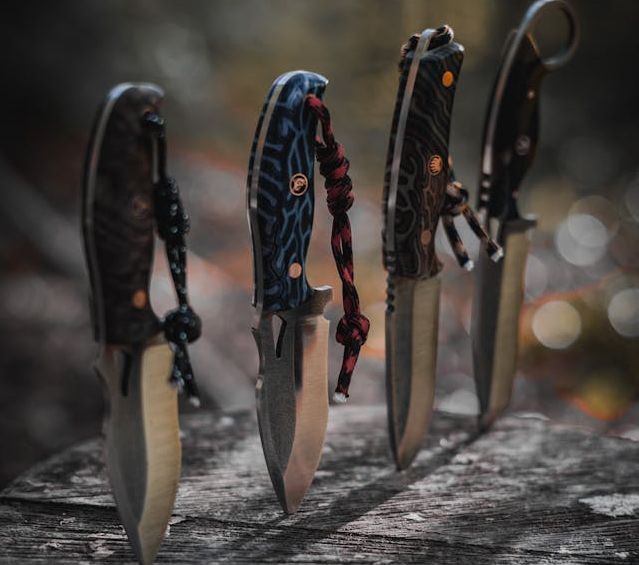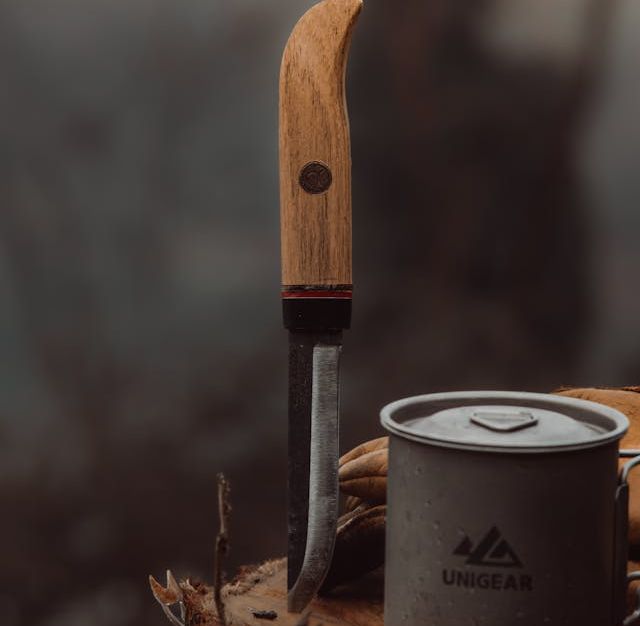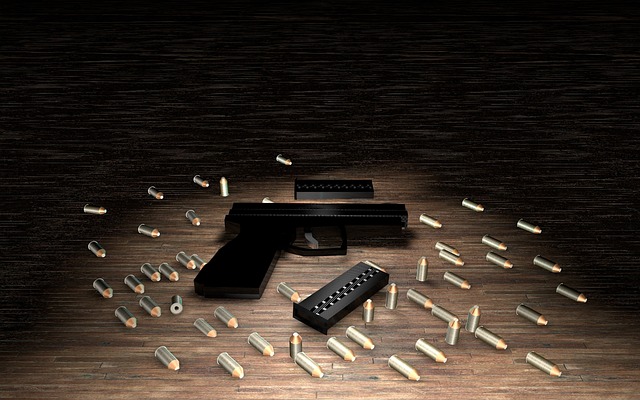Unraveling the intricate web of Arkansas knife legislation is an essential task for both locals and those passing through. Situated in the heart of “The Natural State,” Arkansas boasts abundant opportunities for outdoor activities—hunting, fishing, camping, and more. In this context, the use of knives becomes commonplace. However, it’s imperative that individuals wielding these tools fully understand and meticulously adhere to the underlying statutes to avoid legal complications.
Demystifying this tangled web of knife ownership within Arkansas’ boundaries involves unearthing several pivotal components. These range from discerning which types of knives are deemed lawful to restrictions influenced by age or blade length; even situations where possession might veer from legality into prohibition territories need understanding. Fostering a lucid understanding of Arkansas’s knife laws doesn’t just safeguard one against unlawful possession but also lays down strong groundwork towards responsible stewardship.
- Permissible Knife Types: Arkansas law permits the ownership of a variety of knives, including pocket knives, hunting knives, and utility blades. However, it’s important to note that knives such as switchblades or butterfly knives fall into the category of illegal possession.
- Age Restrictions: In Arkansas, there are age restrictions in place regarding knife ownership. Individuals under the age of 18 are generally not allowed to own any type of knife unless they have parental consent.
- Blade Length Regulations: Blade length is a crucial aspect of Arkansas’s knife laws. Carrying a knife with a blade exceeding 3 inches may lead to legal complications, with certain exceptions for activities like hunting or fishing.
- Location-based Prohibitions: Specific areas, including schools, government buildings, and public transportation systems, have prohibitions on the possession of certain types of knives. It’s important to be aware of these location-based restrictions to avoid legal issues.
By comprehending these pivotal components surrounding Arkansas’s knife legislation and adhering strictly towards them not only ensures one stays within the confines of legality but also promotes responsible usage and ownership practices.
In conclusion; while navigating through this intricate web might seem daunting initially – armed with accurate knowledge and prudent judgment – one can confidently stride toward upholding both their rights and responsibilities when it comes to wielding these essential instruments within “The Natural State”.
Insights into the Types of Knives Considered Legal in Arkansas

The labyrinthine nature of knife laws can be confounding, as each state presents its own intricate tapestry of regulations governing the ownership, carriage, and application of knives. Arkansas paints a completely different picture with its distinctive set of knife laws that grant substantial liberties to residents when compared with other states. This place does not fetter you with specific limitations on which type or design your knife should adhere to – this covers an extensive range including but not limited to balisongs, folding knives, switchblades, dirks, daggers stilettos and even concealed knives such as cane and lipstick knives.
On the opposite end lies Kansas City’s policies on blades that are more convoluted and restrictive in comparison. Knives bearing razor-sharp edges like switchblades don’t sit well under the umbrella of Kansas City codes. Nonetheless it is crucial to recognize how Arkansas’s lenient perspective encourages responsible ownership; ultimately placing the responsibility for correct usage squarely upon individual shoulders. This contrasts starkly against Kansas City’s methodology which veers towards constraints and regulation.
Grasping these subtle differences is non-negotiable for enthusiasts who have an avid interest in bladed instruments as this knowledge equips them better from a legal standpoint while also ensuring safe practices by adhering strictly to countywide or statewide legislations.
Decoding the Age Restrictions for Knife Possession in Arkansas
In the sphere of knife regulations in Arkansas, age restrictions unfurl a tapestry of considerable bewilderment. A lucid grasp of these boundaries guarantees lawful and responsible behavior. At the heart of this discourse lurks an inquiry: is it permissible to openly carry a knife in Arkansas? The response calls for an immersive journey into the labyrinthine legal stipulations concerning knife possession and open carry edicts.
The state of Arkansas endorses open carry of knives without any particular age constraints; liberty to brandish a blade openly extends across all ages. However, let’s not be beguiled into thinking that ownership or usage of knives is entirely unrestricted. Other variables such as nature and length of the blade, along with motive behind wielding such weaponry, have weighty implications on their lawful acceptability. This absence of age-based restriction for open carriage highlights the significance attached to education and responsibility while handling such instruments.
Exploring the Limitations on Knife Blade Length in Arkansas
Arkansas knife owners often find themselves entangled in a web of uncertainty regarding the legality of toting their blades on their belts. This is not without reason, given that the state’s laws impose certain limits on blade length for concealed carry, creating a rather complex situation. The lingering question remains: Is it legal to strap a knife onto your belt in Arkansas?
Delving into the specifics of Arkansas law reveals that one can legally possess and carry a knife with a blade length no greater than 3.5 inches without fear of legal backlash. Importantly, this rule applies regardless if the weapon is brandished openly or tucked away discreetly, making it perfectly acceptable for Arkansans to don knives on their waistbands as long as they respect these size restrictions. It should be noted though that such regulations are open to interpretation and enforcement may fluctuate across different areas within the state.
The Fine Line: When Does Carrying a Knife Become Illegal?
In the heartland of Arkansas, a nebulous threshold seemingly exists, the one that sketches out the lawful and unlawful facets of carrying a knife. A multitude of determining elements are thrown into the mix including but not limited to: the intention behind possession, nature of blade or device, situational context and finally, how it’s being carried about. To decipher a recurring inquiry – “Is possessing brass knuckles legal in Arkansas?” The response is affirmative as long as they aren’t utilized with illegal harm-inducing intent towards another person. Brass knuckles along with other akin devices fall under weapon classification yet their ownership, carriage and self-defense utilization remain within legal bounds.
This elusive boundary differentiating between legitimate knife possession from its illicit counterpart hinges on more than just blade type or apparatus used; it extends to its application and circumstances surrounding its carriage. For instance: bringing an otherwise legally permissible knife into school premises concealed without requisite permit or intending to exploit it as a weaponry tool in criminal acts can catapult this right into an offense territory according to Arkansan law framework. Grasping these subtle distinctions holds paramount importance for individuals striving for harmonious adherence with state regulations related to weapon and knife possession.
Implications of Violating Knife Laws in Arkansas
Non-compliance with the intricate regulations concerning knife ownership and use in Arkansas can lead to significant ramifications. Those who transgress these legislative constructs, such as clandestinely carrying a blade without official permission or possessing a knife with a blade length surpassing the prescribed limits, may face sanctions varying from monetary penalties to incarceration. It’s worth underscoring that inquiries like “What size knife am I allowed to carry in Arkansas?” aren’t simply theoretical but delve into critical legal considerations prospective knife owners need to ponder within this jurisdiction.
A core feature of these rules revolves around the evaluation of the dimension of the knife blade. Although open-carry knives are not subject to any specific length constraints under Arkansas law, those seeking to carry concealed blades must be well-versed in stipulations related to its size. To underscore the gravity embedded in queries like “What size knife can I wield covertly in Arkansas?” – infringing upon such guidelines could equate charges equivalent to felonies or misdemeanors contingent on context; hence an intimate comprehension of these laws is indispensable.
Knife Laws and the Impact on Hunting and Fishing Activities in Arkansas
In the heart of America, nestled amid verdant landscapes and burgeoning wildlife, lies Arkansas – a state admirably christened as ‘Natural’. It is here that hunting and fishing thrive with an abundance that leaves outdoor enthusiasts in constant awe. Yet, amid this fervor for nature’s bounty remains one nagging query: “What size knife can I legally carry during these activities?”. Indeed, understanding the implications of knife laws on such beloved pastimes is no trivial matter.
Arkansas law indeed offers some level of freedom in this aspect – it places no limits on the size of a blade carried during hunting or fishing excursions. However, such liberty comes with its own caveat: it must serve solely as a tool rather than a weapon. It’s crucial to remember though that even lawful carrying may not extend across all terrains; individual regions might enforce stricter regulations. Besides, possession of knives – despite being for sporting purposes – does not grant immunity from legal repercussions if misused or misapplied irresponsibly or unlawfully.
FAQ
The state of Arkansas tends towards leniency regarding the issue of knife ownership. However, certain caveats exist related to the owner’s age, type of blade owned, its length and under what conditions it is carried.
A vast array of knives are sanctioned by law in Arkansas including pocket ones, balisong types, switchblades as well as Bowie blades and larger variants. Nevertheless, staying abreast with the most recent legislation is always recommended.
Indeed there is; you need to be at least 18 years old for legal ownership. Minors can also have access but only if they’re partaking in a bona fide sport or pastime where a knife serves an essential role.
There’s no explicit mention about limitations on blade size within Arkansan law. That said, caution should be exercised when carrying unusually long blades since this might court unnecessary legal complications.
The act becomes unlawful if one carries a weapon with intent to commit illicit activities. Also note that public spaces such as schools and government buildings along with events often prohibit presence of weapons such as knives.
Breach could indeed lead to severe repercussions ranging from fines to incarceration or potentially both depending upon how grave the violation was seen by authorities.
The impact over hunting & fishing is significant due their dependence over such tools like knives; thus understanding all associated rules while carrying & using them is crucial to avoid any legal backlash.



